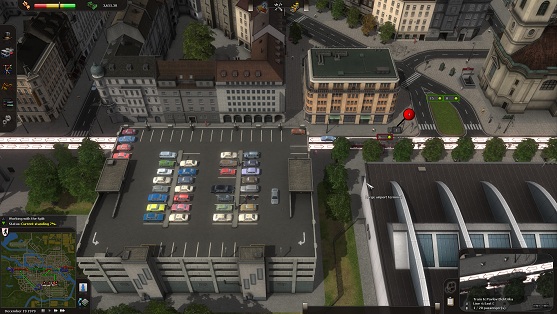
For those who don’t read my other blog, I’ve been busy at my new job at Seremban, Malaysia, so I don’t get to write or play games as much anymore. Nevertheless, I still intend to play games and to write about them whenever time permit so this blog won’t die completely. So here’s a summarized report of the latest game I played, Cities in Motion by a new studio Colossal Order and published by Paradox Interactive.
The Good Stuff
- It’s a transport management game and I haven’t played one of these in ages! This is a really pure public transport game. The maps are more or less pre-made. New buildings are scripted to slowly appear over time but for the most part the cities are static and you have no say over how roads are laid out and where all the buildings go. Your job is to work with the layout of the existing city and build a public transport network that people will actually want to use and that can turn a profit.
- Unlike the well-known Transport Tycoon which focused on long-haul routes carrying both goods and cargo between cities, this game is all about ferrying people around within a city. The standard transport options are the lowly bus, the tram and the mighty rail system. More exotic options are the water buses and the expensive helicopter.
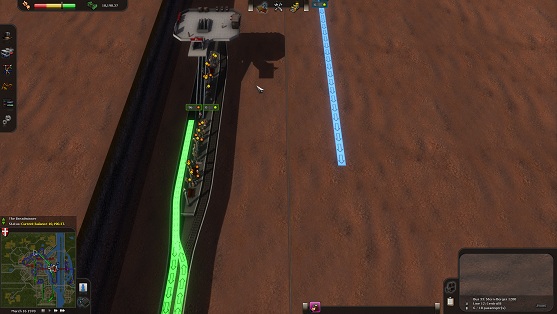
- Other than roads, you do get to build the rest of your transport infrastructure. Buses must stay on the pre-designed roads of course and you define their routes by building bus stops and linking them together. For both trams and rail, you get to build tracks and stops for them. Rail is wonderfully versatile so building them underground turns it into a subway system and building it on elevated pylons turns it into a monorail. Water buses simply need piers while helicopters need helipads.
- As you buy new vehicles and set up new routes, you automatically hire drivers, ticket inspectors, office administration staff etc. which drive up your overhead. You do get to manage your wage levels and ticket costs. Plus you can even launch different types of advertising campaigns to boost your transport company’s popularity with a particular demographic.
- The graphics are decent and it’s quite fun to watch the denizens of the city move around the city as they go through their routines. They won’t just commute between their residence and their workplace. They’ll also visit government buildings, go to the mall or the church, to the stadium or the airport etc.
- The game comes with four cities, Amsterdam, Berlin, Helsinki and Vienna, all of which are different enough that you get a good variety of layouts to experiment with and in the sandbox mode you can choose to play them in any time period between the beginning of the 20th century up to the beginning of the 21st century. There is also a campaign that consists of a series of scenarios that jumps around between cities and time periods. It is odd that they only picked European cities for the base game.
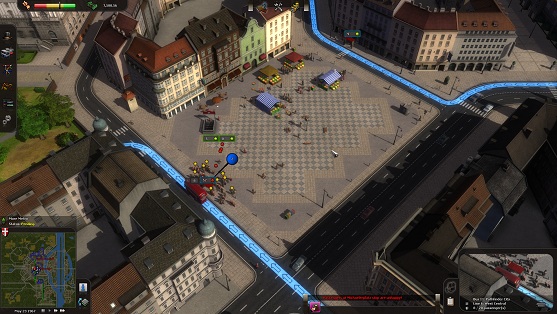
The Bad Stuff
- The interface is less than ideal. In this day and age, it is irksome that the main screen won’t zoom out to give a complete view of the city. The various overlays giving you information on where people of different demographics live, work and play are also tedious to use. How come the designers didn’t just go with the excellent tools that were used all the way back in Simcity 4: Rush Hour?
- The scenarios are horrifically bad. The goals are all hard coded and don’t respond at all to what the player is doing, resulting frequently with the player committing to a particular traffic plan for the city only to have to throw it all away if you want to comply with the objectives. Strangely this is mitigated by the fact that you don’t actually have to complete most of the goals to finish a scenario. Most of the time, you can just ignore all the goals, wait for the final one to pop up, do that one and then the game happily announces that you’ve completed the scenario. It’s particularly stupid when the game praises you for doing something that you never got around to doing anyway.
- Despite the variety of transport options, rail so dominates the game that the other options are more or less afterthoughts. It is nearly impossible to make a decently profitable network without using rail. While rail does have high startup costs, its huge transport capacity, ability to completely ignore traffic if you build subway tunnels and its low running costs make it worthwhile to take lots of loans early just to have a rail network up quickly. While the other transport modes can help to feed your rail network, it’s clear that you always want rail to do all the heavy lifting.
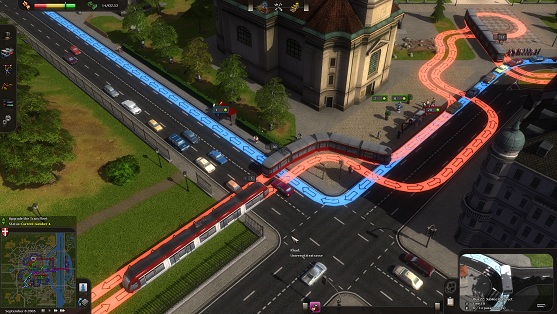
- On some maps, such as Amsterdam, the road network is designed in such a way that you are doomed to have traffic jams on all the key arteries regardless of what you do. This makes buses, and trams if you don’t have offroad areas to place them, pretty much useless.
- While I understand that patches have greatly reduced this problem, I still notice that sometimes traffic will get stuck when the vehicles all block each other, so huge traffic jams build up at the intersection. It seems that when something like this happens, the game eventually makes some of the stuck cars go away, but it could take a while and all your customers will get angry. Occasionally, water buses seem to get stuck for no reason at all, necessitating you to manually reset them.
- The game is much harder if you play in the early time periods compared to the late time periods, which is contrary to most players’ expectations. This is because the early buses and trams all have very low passenger capacity, making it very difficult to set up a profitable transport company. If you play in the later periods, you can get the money rolling in much more quickly with high capacity vehicles and large volumes of passengers even if the overall traffic situation in the city is bad.
- The developers chose to release a lot of stuff through paid for DLCs which feels like nickel and diming players. The packs include mostly more vehicle models, which are probably of little value, but also such things as multi-level rail interchange stations which players could fairly consider to be essential to the main game. Overall, I still hate it when the company makes functional items, rather than mostly cosmetic ones, available only if you pay extra for DLC.
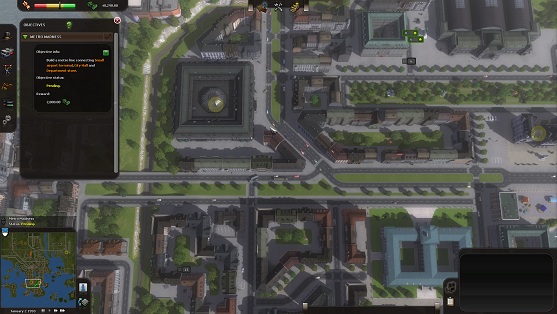
The Bottom Line
Cities in Motion has way too many faults for it to earn a place alongside such games as SimCity and Transport Tycoon, but given the lack of other modern options, it’s still not a bad buy. You get a tremendous sense of satisfaction when you manage to efficiently cover the whole city with your public transport network and watch how passengers in the suburbs take the bus to go to the metro stations, see them change metro lines and finally take another bus or a tram to arrive at their final destination. You might even feel a bit of swelling pride as you see the city’s citizens eschew their cars to switch to your vehicles, resulting in less traffic on the roads.
It’s no keeper however as you once you figure out how important the rail network is, you can basically go for it first every time and everything else just falls in place easily. There’s not much room for experimentation with different transport layouts and you’ll soon get bored of doing the same thing over and over again. The scenarios could have given the game a bit more longevity if they had been designed properly and the goals in each scenario were actually consistent, but they’re terrible so most players will either skip them and go straight into sandbox mode or play the scenarios but mostly ignore the goals.
One Response to “Cities in Motion”
I liked it a lot more though. Although I agree it’s not as good as the classic and Mass Transit is overpowered. It’s just rare to get a game like this these days.
How’s your new job holding up?
Leave a Reply